Specify the Web Service and operation to use
After you add an instance of the Web Services Client adapter to a project you need to specify the Web Service that the application will use and which Web Service operation the application will invoke.
To specify the Web Service to use:
1. In the Project Explorer, expand the project’s Adapters node and then expand the WebServices Client Adapter node.
2. Double-click the entry for the adapter instance you want to configure. This opens the adapter instance configuration in the Web Service adapter editor, showing CLASSPATH and other standard properties provided by the adapter's resource bundle. 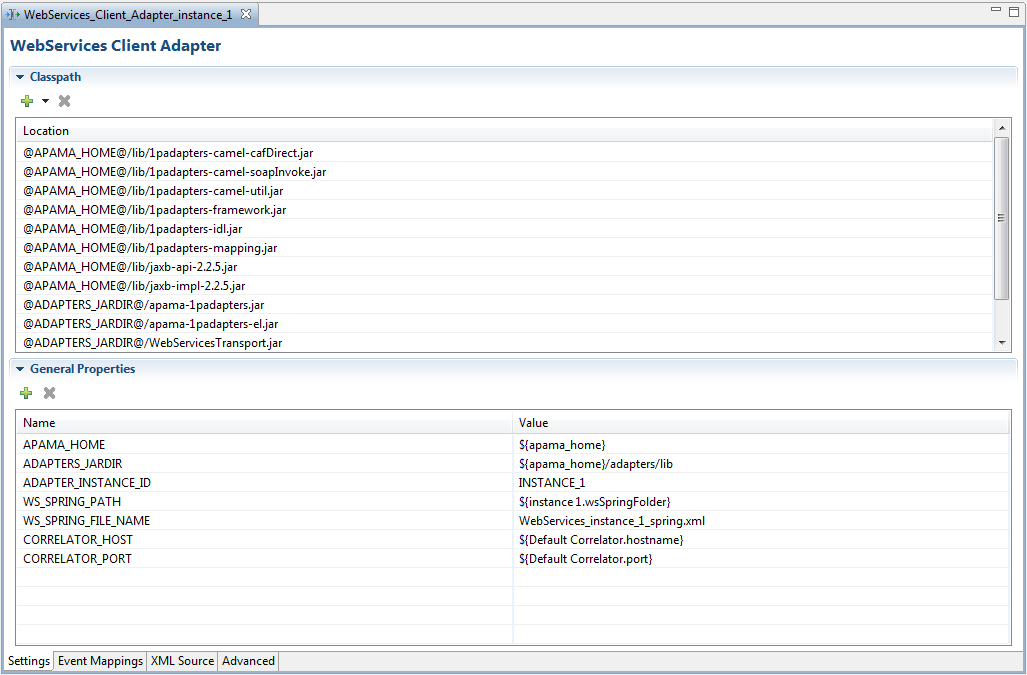
3. In the Web Service adapter editor, select the Event Mappings tab. 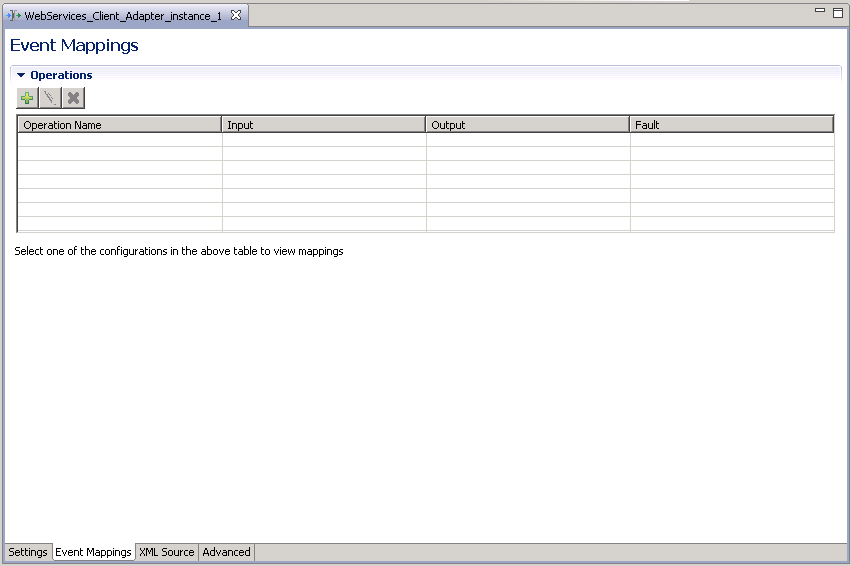
4. On the adapter editor's Event Mappings tab, click the Add button ( ). This displays the Web Service Configuration dialog.
). This displays the Web Service Configuration dialog. 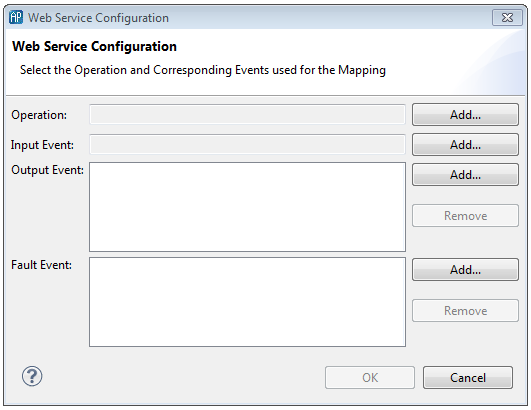
5. In the Web Service Configuration dialog, to the right of the Operation field, click the Add button and select Create New. This displays the Web Service Client wizard. 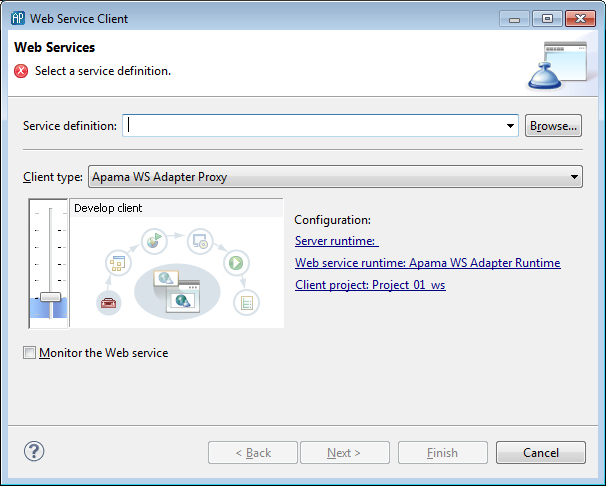
6. In the Web Service Client wizard, in the Service definition field, specify a valid URL for the Web Service Definition File (WSDL) that defines the Web Service. This can be a local file or a file at a remote location. Be sure to use the complete syntax when specifying the location for the WSDL file including file:/// or http://. Note, if you click the Browse button, you can select a WSDL file located in your Workspace.
7. In the Client type field, make sure that Apama Adapters Proxy is selected from the drop-down list (this is the default).
8. Click Next. The second page of the Web Service Client wizard opens, showing all the operations that are defined in the WSDL file. The operations are shown with SOAP and SOAP 1.2 bindings depending on how they are defined in the WSDL file. 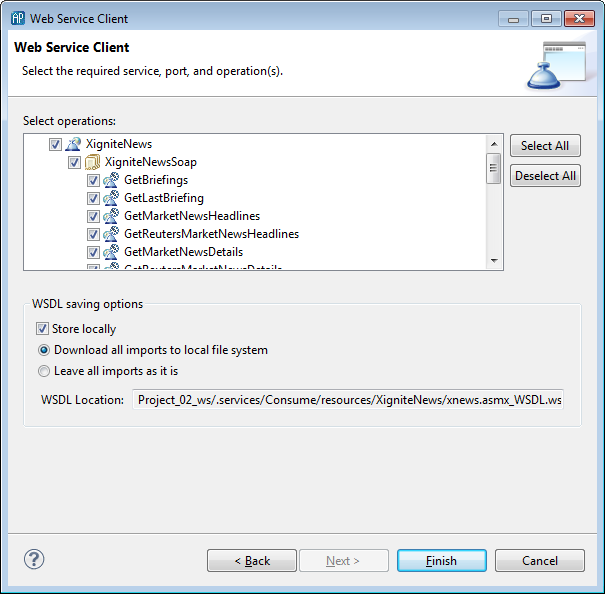
If you want your application to invoke all operations, click Finish instead of Next and skip the next two steps. You are done with this part of the configuration.
9. In the second page of the Web Service Client wizard, select the service operation(s) you want your application to invoke.
10. Click Finish.
If you selected one operation the wizard adds it to the
Operation field of the
Web Service Configuration dialog.

If you selected more than one operation the wizard displays the
Select Operation dialog, which lets you specify the Apama events that will be mapped to Web Service messages.
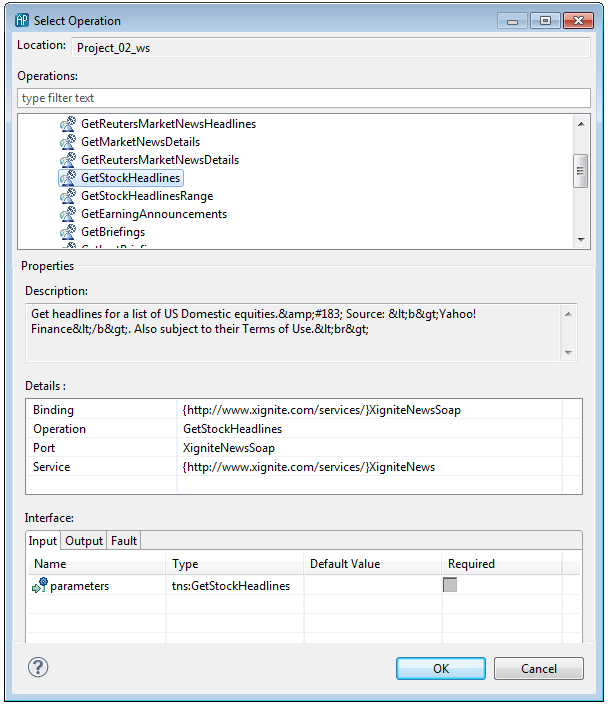
Whether you selected one operation or multiple operations, the next step is to specify the Apama events that will be mapped to Web Service messages; for more information, see
Specifying Apama events for mapping.
Copyright © 2013
Software AG, Darmstadt, Germany and/or Software AG USA Inc., Reston, VA, USA, and/or Terracotta Inc., San Francisco, CA, USA, and/or Software AG (Canada) Inc., Cambridge, Ontario, Canada, and/or, Software AG (UK) Ltd., Derby, United Kingdom, and/or Software A.G. (Israel) Ltd., Or-Yehuda, Israel and/or their licensors.




 ). This displays the Web Service Configuration dialog.
). This displays the Web Service Configuration dialog. 



